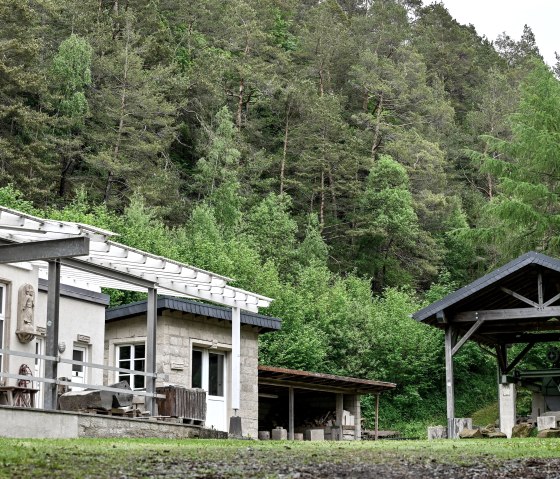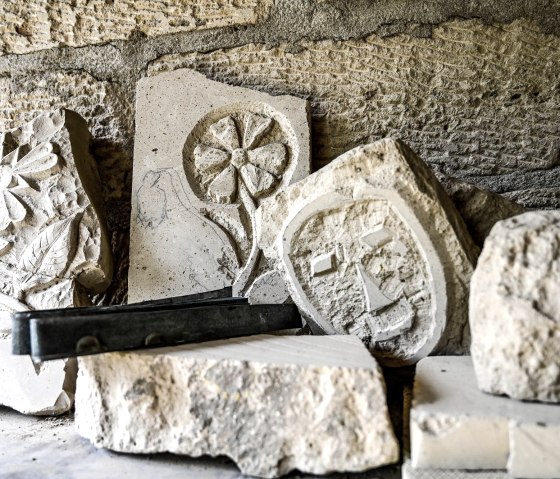Steinmetzbahnhof mit Tuffsteinmuseum
Weibern
Volcanic eruptions of numerous pumice volcanoes around 400,000 years ago left deposits of ash flows and glowing clouds in the entire valley around the village of Weibern.
These material deposits solidified under their own pressure and the influence of groundwater to form tuff rock with a material thickness of over 35m.
Already in the Celtic times, tuff from Weibern seems to have been sculptured for cult marks.
The Romans used the light-colored, easy-to-work stone as building stone.
From the early Middle Ages on, the tuff was mainly transported to the Rhine for filigree stone carving in churches and from there it was partly reloaded onto ships. The stone can be found today both in Bremen Cathedral and in the large vaults of Cologne Cathedral.
After the stone industry was a booming branch of the economy with dozens of companies and several hundred employees at the end of the 19th century, only one company is currently active on site.
In the center of Weibern, many tuff stone buildings testify to the craftsmanship and skills of cheerful and past generations.
The tuff center provides information about tuff. From volcanic formation to mining and its use. The Weibener Schaufenster, the Weibener Steinsägehaus, the Museuminsel and the Steinmetzbahnhof with the tuff museum belong to the tuff stone center in Weibern
Further information on courses and events in the Weibern Tuff Center is available from the Tourist - Info Vulkanregion Laacher See on 02636 - 19433.
Travel sustainably! Use public transport! The stop "Alter Güterbahnhof" (Bahnhofstraße 37, 56745 Weibern) is located in the immediate vicinity of the Weibern Tuff Centre. You can find more information about the connections at the stop at https://www.haltestellen-suche.de and at https://www.vrminfo.de.













